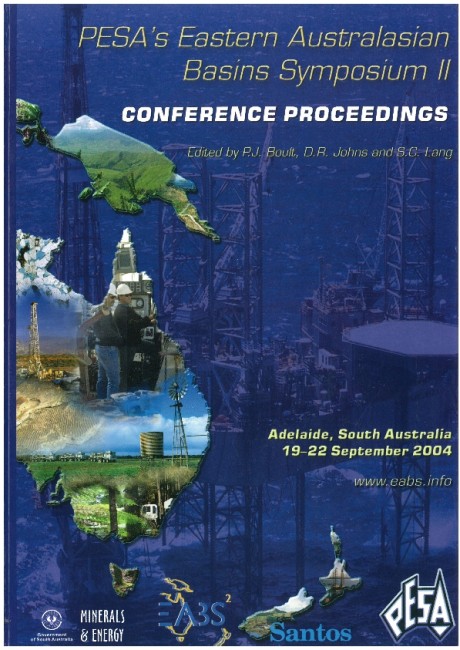Publication Name: PESA's Eastern Australasian Basin Symposium II
Authors: C.J. Boreham, J.M. Hope, P. Jackson, R. Davenport, K.L. Earl, D.S. Edwards, G.A. Logan and A.A. Krassay
Date Published: December 2004
Number of Pages: 42
Reference Type: Book Section
Abstract:
Genetic relationships have been found between natural gases, oils, oil stains and potential source rocks in the Otway Basin using a combination of molecular and isotopic (carbon and hydrogen) compositions. These correlations re-enforce the strong compartmentalisation of petroleum systems in the basin and indicates mainly short-to medium-range migration distances from source to trap.Six Austral Petroleum System oil families (AIFI, AIF2, AIF3, AIF4, A2 and A3) have been previously identified in
the Otway Basin. However, our study shows that the Late Jurassic-Early Cretaceous AIFI oil family-derived from
saline lacustrine source rocks-and the Late Cretaceous A3 oil family-derived from marine source rocks-are most
likely drilling contaminants, rather than true oil families.
Gas and oil in the western Otway Basin (AIF2, AIF3) were sourced from Late Jurassic-Early Cretaceous fluviolacustrine rocks of the Crayfish Supersequence. In the eastern Otway Basin the gas and oil (A2) were sourced by coaly facies within the Early Cretaceous (Aptian-Albian) Eumeralla Supersequence. Gas and oil in the central Otway Basin have a mixed source from both Crayfish and Eumeralla supersequences but are predominantly of the latter origin. Multiple charge histories are evident in the widespread influx of overmature, dry gas (most prominent in the western Otway Basin) and a more recent influx of magmatic C02. In-reservoir biodegradation of oil is seen in the shallower reservoirs but this is not a significant risk in the Otway Basin.


